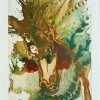In Brief
| Subtitle: | signed - beautiful quality - antique framed |
| Product ID: | 611ART |
| Artist: | Walter Sickert (1860-1942) |
| Nationality: | German |
| Type: | Original water colour |
| Date: | Unknown |
| Signed: | Signed by the artist |
| Subject: | Diep, France |
| Size: | Size of visible image: 18 inches x 12 inches | Size of frame: 22.5 inches x 16.5 inches |
| Condition: | Excellent - no damage |
| Highest Price at Auction: | $369,700 - Bonhams, New Bond Street, London 2012 |
Interested in this item?
Contact us if you would like to purchase or find out more about this item
Telephone (UK)020 7127 0449
07882 539667
Telephone (International)+44 (0)20 7127 0449
+44 7882 539667
Email[email protected]
Arrange a viewingPlease call to arrange a viewing in Central London
‘Diep’ - Walter Sickert - original watercolour - speculative
signed - beautiful quality - antique framed
We are selling this beautiful water colour painting as speculative Walter Sickert. The signature is correct, the quality of work is correct and the subject is correct - the painting is of Diep, France, where Sickert moved to in the late 1880s. We have shown it to three knowledgeable individuals: two from London auction houses and one from a respected London art dealership. Two thought that the painting was 'right', while the other was unsure. As you can see, authenticating serious art is difficult and often about opinions. To sell the painting through an auction house or respected gallery, it must be officially authenticated by a world-renowned Sickert expert, of which there are two. The problem is that this is a costly and time consuming process. We have therefore decided to sell at a low nominal price. If the work turns out to be 'in the manner of' you still have a very fine painting, worth in itself what we are asking - people commission 'in the manner of' paintings for up to tens of thousands of pounds. If however, you manage to get the painting officially authenticated, you will own a very valuable asset. The painting comes complete with an antique frame.
PROVENANCE
Private collection of Stephen Baring. Collection includes two inherited collections and twenty five years of personal collecting. The collection numbers well over 1,000 works of art and a number will be sold over the coming weeks to fund a project.
BIOGRAPHY
Walter Richard Sickert (1860-1942), born in Munich, Germany, was a painter who was a member of the Camden Town Group in London. He was an important influence on distinctively British styles of avant-garde art in the 20th century. Sickert was a cosmopolitan and eccentric who often favoured ordinary people and urban scenes as his subjects. His oeuvre also included portraits of well-known personalities and images derived from press photographs. He is considered a prominent figure in the transition from Impressionism to Modernism. Just before World War he championed the avant-garde artists Lucien Pissarro, Jacob Epstein, Augustus John and Wyndham Lewis. At the same time he founded, with other artists, the Camden Town Group of British painters, named from the district of London in which he lived. This group had been meeting informally since 1905, but was officially established in 1911. It was influenced by Post-Impressionism and Expressionism, but concentrated on scenes of often drab suburban life; Sickert himself said he preferred the kitchen to the drawing room as a scene for paintings. From 1908-1912 and again from 1915-1918 Sickert was an influential teacher at Westminster School of Art. He also briefly set up an art school in Manchester where he was to teach the artist Harry Rutherford, whom he later described as "my intellectual heir". Sickert's interest in Victorian narrative genres also influenced his best known work, Ennui, in which a couple in a dingy interior gaze abstractedly into empty space, as though they can no longer communicate with each other.
In his later work Sickert adapted illustrations by Victorian artists such as Georgie Bowers and John Gilbert, taking the scenes out of context and painting them in poster-like colours so that the narrative and spatial intelligibility partly dissolved. He called these paintings his "Echoes". Sickert also executed a number of works in the 1930s based on news photographs, squared up for enlargement, with their pencil grids plainly visible in the finished paintings. Seen by many of his contemporaries as evidence of the artist's decline, these works are also the artist's most forward-looking, seeming to prefigure the practices of Chuck Close and Gerhard Richter. Sickert took a keen interest in the crimes of Jack the Ripper and believed he had lodged in a room used by the infamous serial killer. He had been told this by his landlady, who suspected a previous lodger. Sickert did a painting of the room and titled it "Jack the Ripper's Bedroom." It shows a dark, melancholy room with most details obscured. This painting now resides in the Manchester City Art Gallery in Manchester.
A beautiful original painting that will be much admired in your home or office. Will provide an excellent financial investment as well as a possession to enjoy. You are welcome to return for a full refund if you are not entirely happy. Also, please feel free to view at our central London showroom.



